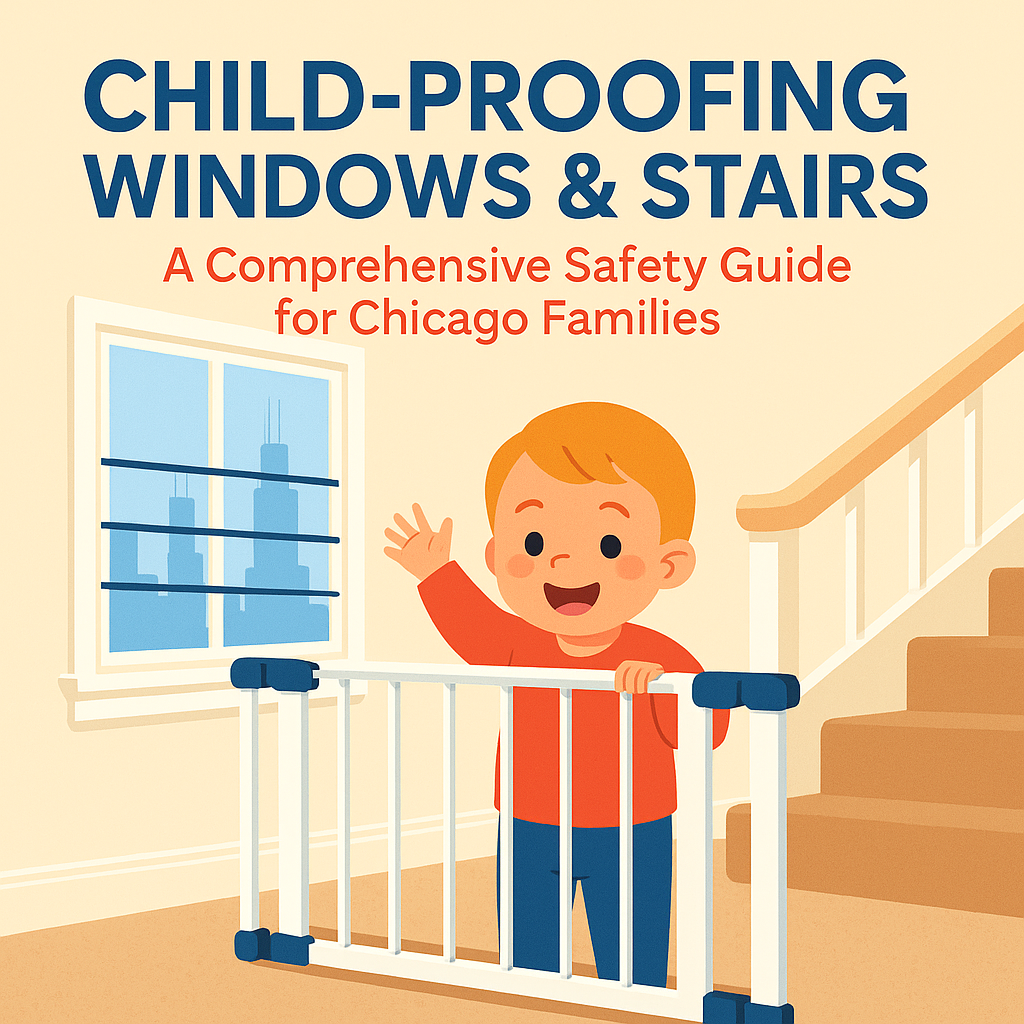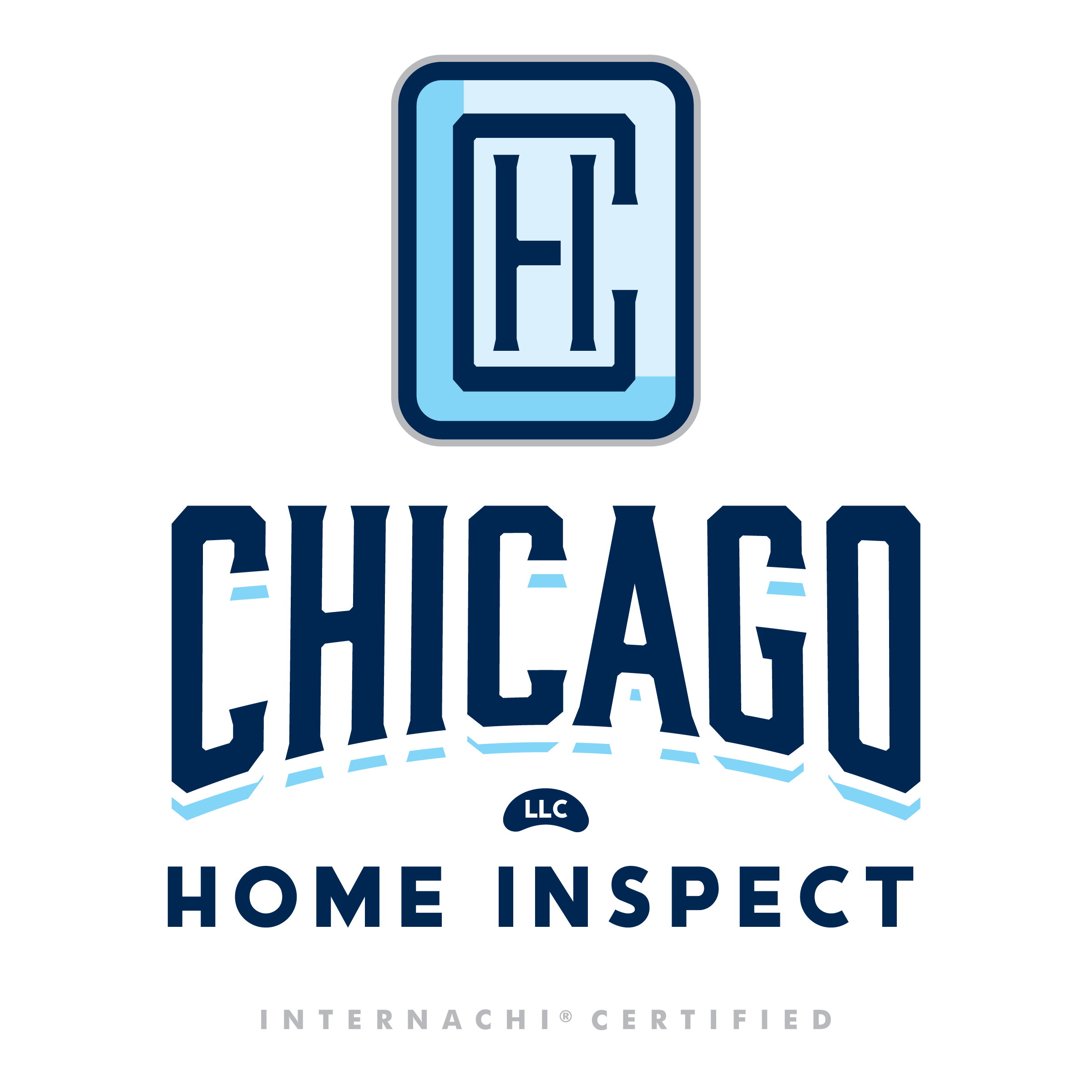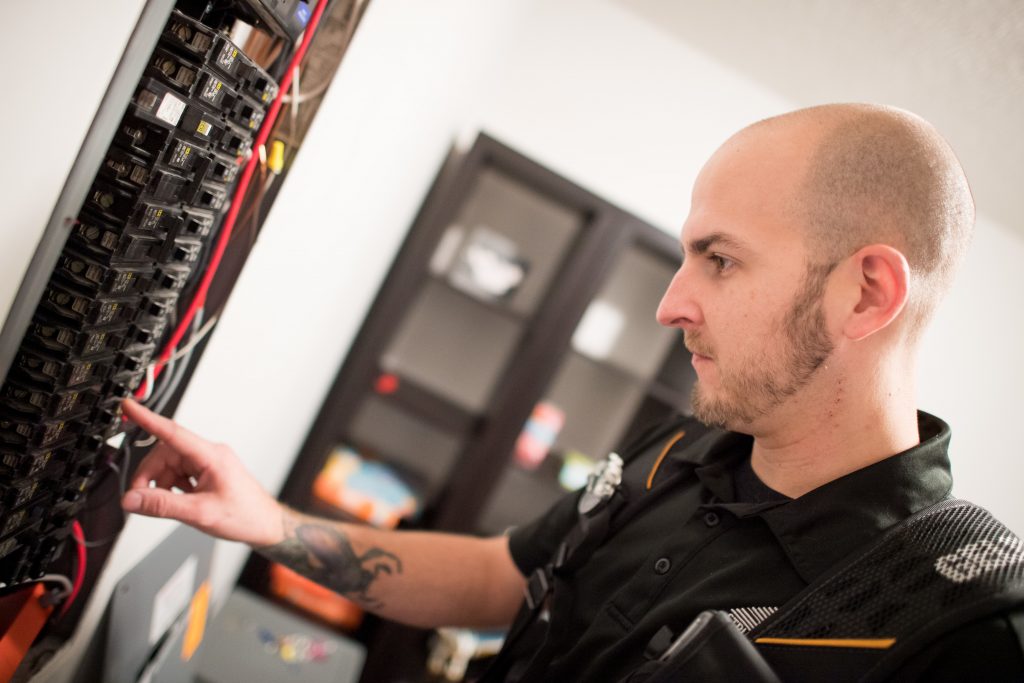Introduction: Falls Are the Silent Threat in the Family Home

According to the Centers for Disease Control and Prevention (CDC), falls remain the leading cause of non‑fatal injuries for children under 15. Roughly 2.8 million kids visit emergency rooms for fall‑related injuries each year, and a significant percentage involve windows or stairways. While headlines often focus on high‑profile hazards like electrical fires or carbon‑monoxide leaks, everyday fall risks pose a greater statistical danger—especially in multi‑story homes common across Chicago’s historic neighborhoods.
When local parents schedule home inspection services in Chicago, the best-practice checklist invariably covers child-safety measures for windows and stairs. This article delivers a complete, 1,200-plus-word roadmap to help you safeguard both areas. We’ll cover injury statistics, building-code guidelines, hardware options, installation steps, and maintenance routines—everything Chicago home inspectors look for when evaluating family safety.
1. Understanding the Risk: Why Windows and Stairs Are High‑Priority Zones
1.1 Window‑Related Injuries
- The U.S. Consumer Product Safety Commission (CPSC) reports 8 deaths and 3,300 hospitalizations annually from children falling out of windows.
- Roughly 70 % of incidents occur at home, often when a supervising adult is present in another room.
- Screens offer zero structural protection; they are designed to keep insects out, not children in.
1.2 Stair‑Related Injuries
- Nationwide Children’s Hospital data show an average of one child treated in an ER every six minutes for stair‑related injuries.
- Toddlers under two are the most vulnerable because they lack depth perception and coordination.
- Spiral staircases and open risers—features seen in renovated Chicago lofts—present unique hazards that inspectors note during walk‑throughs.
Bottom line: Child‑proofing isn’t a one‑time add‑on; it’s an integrated safety strategy that should be reviewed whenever you remodel or request inspection services in Chicago.
2. Window Safety: Hardware, Codes, and Best Practices
2.1 Know Your Window Type
| Window Style | Typical Hazard | Child‑Proofing Solution |
|---|---|---|
| Double‑Hung | Lower sash slides up; easy climb point | Install window guards or restrictors |
| Casement | Opens outward; crank handle accessible | Remove or lock handle; use limiters |
| Sliding | Wide opening if sash removed | Pin locks or adjustable stops |
| Fixed/Picture | Minimal risk unless glass breaks | Tempered or laminated glass |
2.2 Building‑Code Snapshot
- IRC R312.2 dictates that the sill height of operable windows must be ≥ 24 in. above interior floor if the exterior drop is > 72 in.
- Existing Chicago homes built before current codes may not meet these rules. During a typical inspection, Chicago home inspectors document non‑compliant sill heights and recommend child‑safety upgrades.
2.3 Hardware Options
- Window Guards
- Fixed or swing‑open bars that install across the lower sash.
- ASTM F2090‑11 compliant models include a quick‑release for emergency egress.
- Window Stops/Limiters
- Restrict upward or sideways travel so the opening is ≤ 4 inches.
- Ideal for renters who may not be allowed to drill permanent guards.
- Pin Locks
- Inserted through the meeting rail to block sash movement.
- Inexpensive but require adult removal to open fully.
- Safety Screens
- Stainless‑steel mesh rated for fall containment; pricier but preserve airflow.
2.4 Installation Steps (Double‑Hung Example)
- Measure Opening: Lower sash 3–5 in. to confirm guard placement.
- Mark Pilot Holes: Follow manufacturer spacing—usually every 4 in. across the jambs.
- Attach Guard: Use the provided screws; avoid overtightening to preserve sash alignment.
- Test Release Mechanism: Ensure an adult can remove bars in under 10 seconds for fire egress.
- Label the Guard: Date of install and emergency instructions aid future owners and inspection services in Chicago assessments.
3. Stair Safety: Gates, Risers, and Railings
3.1 Code Baseline
- IRC R311.7 requires minimum tread depth of 10 in., riser height ≤ 7.75 in., and uniform dimensions across each flight.
- Guardrails must be at least 34–38 in. high with baluster spacing under 4 in.
- In Chicago’s pre‑1910 housing stock, narrow or uneven treads are common; Chicago home inspectors flag these as safety concerns during real‑estate transactions.
3.2 Choosing the Right Safety Gate
| Gate Type | Best Location | Pros | Cons |
|---|---|---|---|
| Pressure‑Mounted | Bottom of stairs, temporary positions | No drilling, quick to remove | Not secure for top‑of‑stairs |
| Hardware‑Mounted | Top of stairs | Sturdy, swings one way | Requires wall studs or banister kit |
| Retractable Fabric | Wide or angled openings | Space‑saving | Can sag if not tensioned |
| Banister‑to‑Banister Kits | Staircases without wall studs | Tool‑free install | May require periodic tightening |
3.3 Installation Steps (Hardware‑Mounted Gate)
- Locate Studs or Secure Banister Adapter: Use a stud finder; if none, mount a 1 × 4 wooden board across multiple balusters.
- Set Gate Height: Base should sit flush with floor to prevent crawling under.
- Attach Hinges: Pre‑drill pilot holes to prevent splitting.
- Adjust Latch Tension: Gate should require adult strength but open one‑handed.
- Verify Swing Direction: Always away from stairs to avoid accidental force down the flight.
3.4 Additional Stair Safety Upgrades
- Non‑Slip Treads: Adhesive strips or low‑profile runners reduce slipperiness on hardwood steps.
- Handrail Extensions: Top and bottom extensions that return to the wall give small hands a better grip.
- Riser Modification: For open‑riser stairs, install riser bars or Plexiglas panels to close gaps exceeding 4 in.
4. Integrated Safety: How Chicago Home Inspectors Evaluate Your Efforts
When you book inspection services in Chicago, here’s what a certified inspector typically analyzes:
- Structural Integrity: Loose balusters, cracked treads, or rotted window framing.
- Hardware Compliance: ASTM labels on guards and gates; proper installation height.
- Emergency Egress: Devices must not hinder escape routes in a fire.
- Maintenance Condition: Rusty screws, warped wood, or fraying gate mesh.
- Documentation: Receipts and model numbers help validate upgrades for insurance or resale.
Pro tip: Keep a binder of manuals, photos, and dates. Thorough records impress buyers and streamline report review by Chicago home inspectors.
5. Complementary Safety Measures
- Cordless Window Coverings: Eliminate strangulation risk from blind cords.
- Smart Sensors: Battery‑powered window‑open alarms can alert adults instantly.
- Motion Lighting: Illuminates stair treads for midnight bathroom trips.
- Floor Padding: Soft area rugs at landing zones absorb impact if a fall occurs.
6. Routine Maintenance Schedule
| Task | Frequency | Why It Matters |
|---|---|---|
| Tighten gate hardware | Monthly | Kids pull, shake, and climb—screws loosen quickly. |
| Inspect window guards for rust | Twice a year | Chicago’s humid summers accelerate corrosion. |
| Test release mechanisms | Fire‑safety drill | Ensures adults can open barriers under stress. |
| Vacuum stair edges | Weekly | Dust on hardwood increases slip risk. |
| Review for growth milestones | Every 6 months | Toddlers learn to climb over gates sooner than you think. |
7. Budgeting and DIY vs. Professional Help
| Upgrade | DIY Cost | Pro Cost (Avg.) | Typical Lifespan |
|---|---|---|---|
| Window guards (4 windows) | $120–$200 | $300–$450 | 10+ years |
| Hardware gate (2 locations) | $120–$180 | $250–$350 | 5–7 years |
| Non‑slip treads (13 steps) | $40–$60 | $150–$200 | 2–3 years |
| Open‑riser retrofit panels | $200–$400 | $600–$800 | 10+ years |
Professionals add value when walls are plaster (common in vintage Chicago homes) or when anchoring to masonry lintels above garden‑unit windows—jobs that require special bits and fasteners.
8. Insurance and Liability Considerations
Many carriers offer premium discounts for documented child‑safety upgrades. Conversely, a serious fall can trigger liability claims that dwarf the modest cost of prevention. Presenting invoices and photos from your upgrades—not to mention a clean report from inspection services in Chicago—positions homeowners favorably during underwriting or resale negotiations.
Conclusion: Small Devices, Huge Peace of Mind
Child‑proofing windows and stairs demands more than stick‑on gadgets; it requires thoughtful integration of hardware, code knowledge, and ongoing maintenance. By installing ASTM‑compliant window guards, properly mounted stair gates, and supplemental safety features, you dramatically reduce the top two in‑home fall hazards for young children.
If you’re unsure where to start, schedule a consult with reputable Chicago home inspectors. Their trained eyes will spot hidden dangers, verify your installations, and issue a report you can reference for years to come. For families committed to safe, worry‑free living in the Windy City, proactive child‑proofing is a must—because the greatest gift you can give your children is a secure home environment where exploration and growth happen without avoidable risks.



